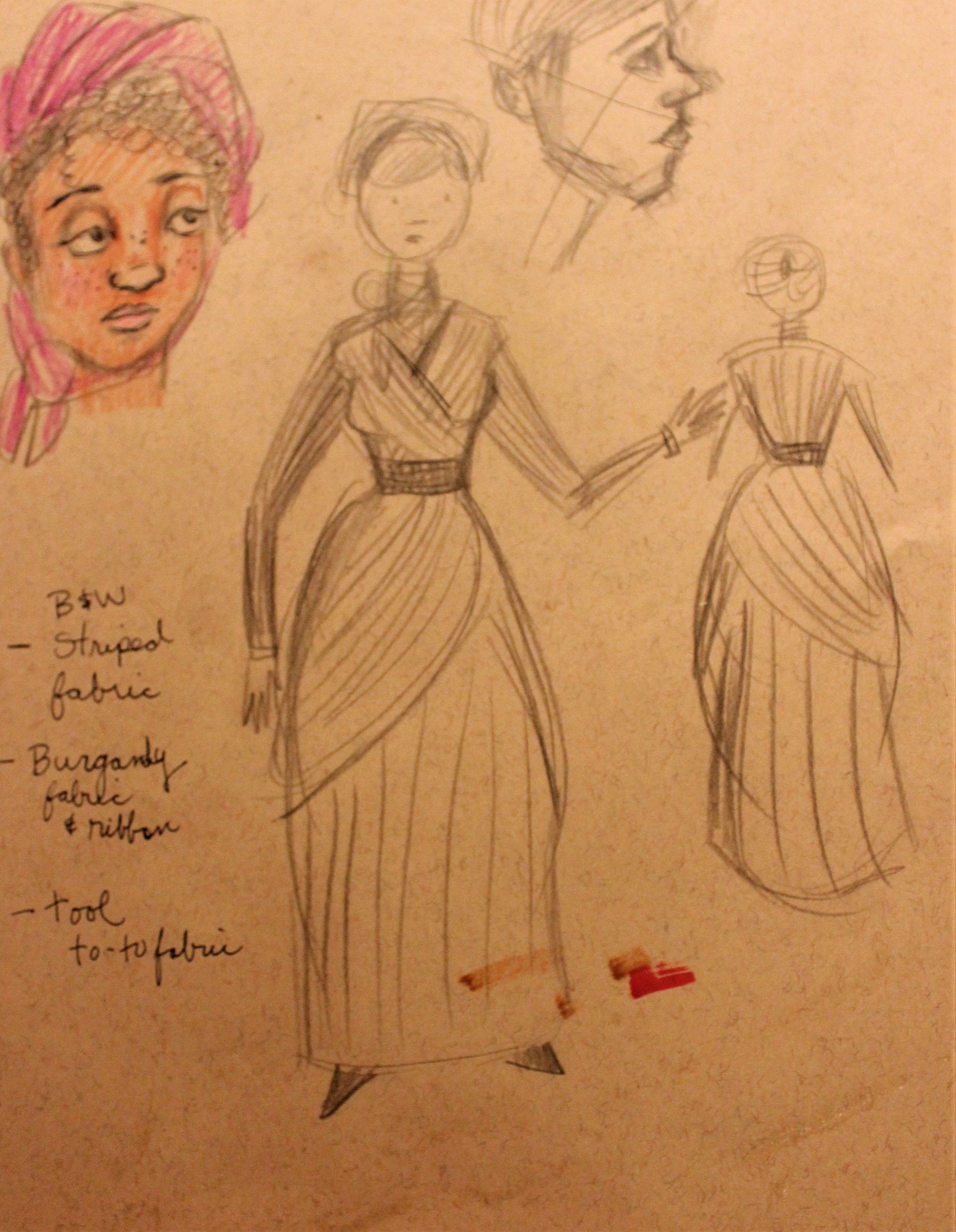GINA BARI ART
Stop Motion Animator & Puppet Maker
Puppet fabrication is one of the cornerstones of my filmmaking practice. My work in stopmotion animation started off with claymation figures, and has evolved to include a wide variety of puppetmaking techniques such as foam latex injection, foam sheet fitting, and polymer sculpting. Completing a fully finished puppet requires a diverse range of skills, executed with careful craftsmanship each step of the way. From constructing the wire armature and casting a plaster mold, right down to detailing miniatures (like painting eyeballs!), I strive to create puppets that are expressive and full of life, but also durable for many hours of filming.
I have shared a detailed documentation of some of my puppet crafting methods below.
PUPPET DESIGN
Drawing the puppet is a great way to work out logistics and concept. While I'm brainstorming on the design, I also consider materials for construction and constuming, keeping in mind that mobility is key to a functional puppet. Expressive movement is essential to the storytelling; durability is also important for many hours of filming. Careful planning in the early stages can help minimize wasting time for repairs during production.
CONSTRUCTING THE ARMATURE
Wire armature is the "skeleton" of many types of puppets in stopmotion animation. This frame establishes the basic body shape of your character, and gives a moveable structure to build up the puppet's body with any variety of techniques and materials, including clay sculpting, felt, and foam. Below, I've detailed my process for two puppetmaking methods: foam latex injection and urethane foam buildup.
FOAM LATEX INJECTION
1. MAKING THE MOLD
Creating a foam latex puppet starts with making the mold. To make a mold of your Roma Plastilina puppet, must follow steps consecutively. You first make a Gatorfoam board box 2 inch space away from puppet and 5 inches high. It will look like an open coffin. Make sure you have two holes in the mold: to insert time downs for the feet and pour foam latex into the mold in.
Blend plaster/Ultra Cal 30 and water into a bucket until smooth. Pour mixture only covering half of your puppet. If you cover the entire puppet, you sculpture and mold will be lost forever in had plaster. Once harden roll up Roma Plastilina clay and place them in four places against the Gatorfoam board. These will be your markers for when the mold is complete. Delicately brush Vaseline on the plaster. Do not get Vaseline on the Gatorfoam board or Roma Plastilina sculpted puppet. Repeat the process again to cover the entire Roma Plastilina sculpted puppet. Once plaster is harden, pull out sculpted puppet and gently clean out the mold. You will have two halves of the mold. Do not scrap the mold in the process. Put mold in a commercial oven to dry out any excess moisture and prevent steam bubbles in the foam latex puppet. Brush on a mixture a drop of liquid and water. This will allow the foam latex puppet to pop out of the mold easier.
2. SHAPING THE ARMATURE TO THE MOLD
The armature must fit the mold just like tailoring clothing to an individual. If you create an armature that does not fit the mold properly, the foam latex will not fill properly onto the armature. Here, I am measuring and carefully bending the wire into the mold.
3. BAKING YOUR PUPPET
After making an armature fitted to the mold, make sure you have two holes in the mold to insert tie downs for the puppet’s feet. With the armature inside the two halves of the mold, use packing tape to completely seal the mold around itself. (It will look like a mummy) Seal the puppet’s feet opening with Roma Plastilina and cover with tape. This will keep the armature centered in the mold as you pour in the foam latex. A gas mask must be worn when using foam latex. Blend foam latex mixture until smooth. Quickly pour liquid into mold. Bake the mold in a latex specific oven for the gelling agents congeal.
Pry the mold halves open and gently take out the foam latex puppet. Gently clean out the molds. Trim foam latex puppet with a small sharp scissor. A nail scissor is ideal.
URETHANE FOAM SHEET FITTING
SHAPING THE FOAM BODY
After making a wire armature using wire, jewelry wire, aluminum rods, Five Minute Epoxy, Plumbers Epoxy and nuts & bolts; you can sew flexible urethane foam on to make the muscle structure.
Once you have achieved the muscle structure of the puppet, you can dip the hands of the puppet into liquid latex. Pigments can be added to change the color of the liquid latex. This will give the puppet the appearance of skin and protect the wire armature at the same time.
Heads can be constructed out any hard materials, such as wood or polymer clay. In the next section, I've provided closer look at how I shape heads with Super Sculpey.
POLYMER SCULPTING
Sculpted puppet heads are created using Super Sculpey, aluminum foil, white beads and craft molding paint. I first set a wooden dowel as a stand for the head.
Next, I wrap aluminum foil on the stand. This will make the sculpted head much lighter than using all Super Sculpey. Finish the basic head shape by sculpting the Super Sculpey on to the aluminum foil.
DETAILING
- Puppet Eye Balls
I use white beads to make the eye balls for the puppet. The bead must be fitted into the head of the sculpted puppet before it is heated. Model car paint is provides an excellent thin coverage to color the iris of the eye. Model paint is perfect for painting props as well.
- Eyelids & eyelashes
Eyelids and eyelashes are made out of Super Sculpey mixed with Magician’s Wax. Place eyelid clay over eyeball, set into the puppet and sculpt into place. I organize my pieces in a fishing supply box and double sided tape on the inside to hold pieces in place.
- Mouth Pieces
Mouth pieces are made out of sculpted colored Super Sculpey and 5 Minute Epoxy. After the puppet head is molded and hardened, place plastic tape over the mouth area. Then, place Super Sculpey over plastic and mold into desired shape.





































